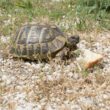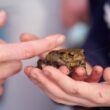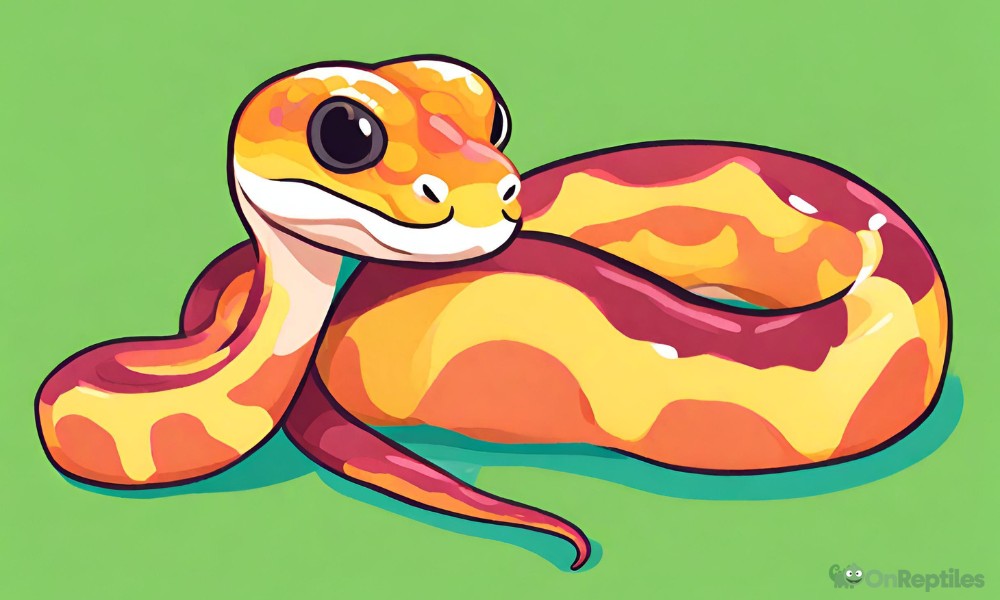In this article Show
If you’ve clicked on this guide, you might be on the cusp of diving into the captivating world of Corn Snakes or perhaps already share your space with one of these slithering wonders. Either way, you’re in for a treat.
As someone who’s had the joy of caring for various reptiles over the years and spent countless hours soaking up information about these amazing creatures, I can confidently say that corn snakes are among the most fascinating and rewarding reptiles to care for.
What sets them apart? Well, they’re remarkably docile, exhibit a plethora of stunning patterns and colors, and are quite hardy – making them ideal for both seasoned herpetologists and those just dipping their toes in the world of reptiles.
In this guide, I’ll walk you through the essentials of Corn Snake care, drawing from both well-researched knowledge and my personal experiences. By the end of it, you’ll be equipped with the fundamental know-how to give your snake a fulfilling, healthy life.
Natural Habitat & Origins
To truly appreciate and care for any species, understanding where they come from and their natural behaviors is invaluable. For Corn Snakes, delving into their origins and natural habitats provides key insights that directly translate to their care in captivity.
Geographic Distribution and the Environments They Thrive In
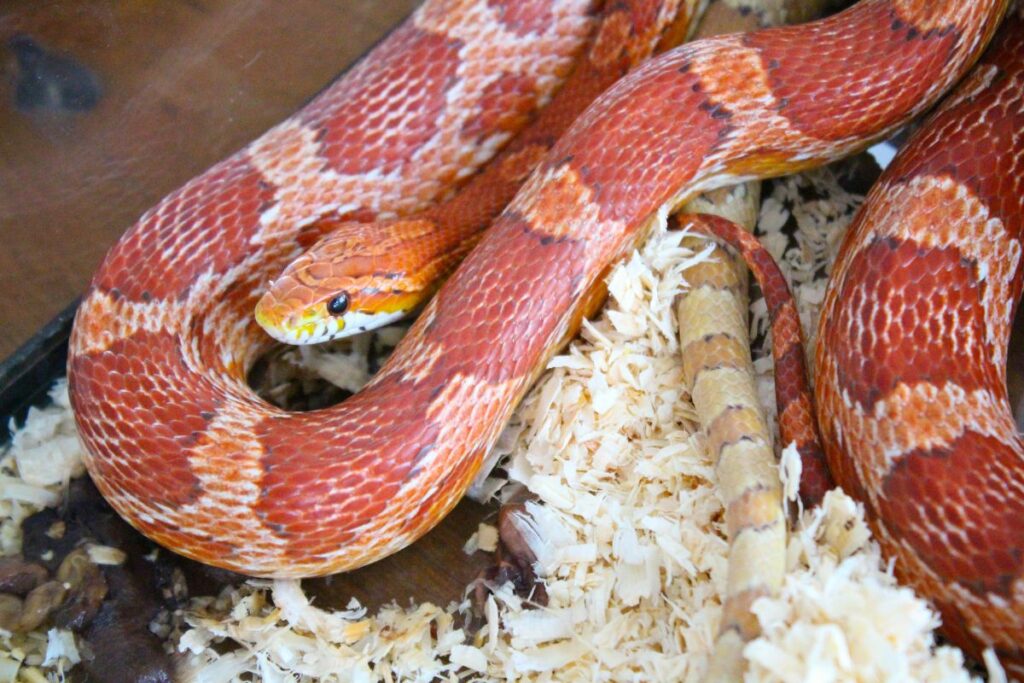
Corn Snakes, scientifically known as Pantherophis guttatus, are native to the southeastern United States. Their range stretches from New Jersey in the north to Florida in the south and as far west as Tennessee and Louisiana.
In the wild, these snakes favor a variety of environments. From overgrown fields and forest openings to abandoned buildings and barns, Corn Snakes are versatile inhabitants.
However, they particularly thrive in areas with ample ground cover and places to hide, such as fallen logs, under rocks, or in tree bark crevices. Their chosen environments often teem with their primary prey: rodents, making these locations ideal hunting grounds.
Ancestral Lineage and Their Adaptability
Corn Snakes belong to the Colubridae family, which encompasses a significant portion of snake species worldwide. Over time, Corn Snakes have carved out a niche in the vast world of colubrids, thanks to their unique adaptability and resilience.
Their adaptability is evident in the wide range of environments they inhabit. This versatility can be attributed to their opportunistic hunting techniques, generalist diet, and their ability to regulate body temperature using available resources effectively. For instance, a Corn Snake might bask in a sunlit patch during cooler mornings and retreat to a shaded, cooler spot during intense heat.
Moreover, their captivating patterns not only make them a favorite among reptile enthusiasts but also serve as effective camouflage, blending seamlessly into the leaf litter and environments they naturally inhabit. This camouflage aids them in both hunting and evading potential predators.
In a nutshell, understanding the ancestral roots and natural habitats of Corn Snakes allows us to recreate an environment in captivity that aligns closely with their instinctual needs. This foundation is the bedrock of providing optimal care for these magnificent creatures.
Choosing Your Corn Snake
Dipping your toes into the world of corn snakes is exhilarating, but before you get swept away by their mesmerizing colors and patterns, it’s essential to make informed choices. From understanding the plethora of morphs to ensuring you bring home a healthy snake, let’s explore the key considerations.
Varieties and Morphs: Understanding the Colors and Patterns
Corn Snakes, due to their popularity in the pet trade, have been selectively bred to produce a stunning array of morphs. These morphs bring out varied colors and patterns, making each snake unique in its own right.
Wild-type or Normal
They resemble their wild counterparts with red, brown, or orange scales and a pattern of dark, squarish blotches.
Anerythristic
Lacking the red pigment, they display shades of gray and black.
Albino or Amelanistic
These lack black pigment, resulting in a yellow or pale snake with pinkish-red eyes.
Snow
A combination of albino and anerythristic, these are white with faint yellow patterns.
Motley
They possess a unique pattern where the usual blotches are replaced by stripes or a more speckled appearance.
… and the list goes on, with Okeetee, Lavender, Caramel, and more.
Remember 🐍
When selecting a morph, do your research. Some morphs might come with specific care nuances or health considerations.
Tips for Selecting a Healthy Snake: What to Look Out For
A visually stunning snake is great, but health should be the top priority.
- Active and Alert: A healthy Corn Snake should be responsive to its environment and your presence.
- Clear Eyes: Except during shedding periods, the snake’s eyes should be clear and not cloudy.
- Firm, Full Body: Check for any lumps, bumps, or unusual kinks in the body.
- Smooth Scales: The scales should be intact, with no signs of mites, sores, or unshed skin.
- Consistent Breathing: Watch out for any wheezing or open-mouth breathing, as these can be signs of respiratory issues.
- Ask Questions: Inquire about the snake’s diet, shedding history, and any past health issues.
Purchasing: Breeders vs. Pet Stores – Weighing the Options
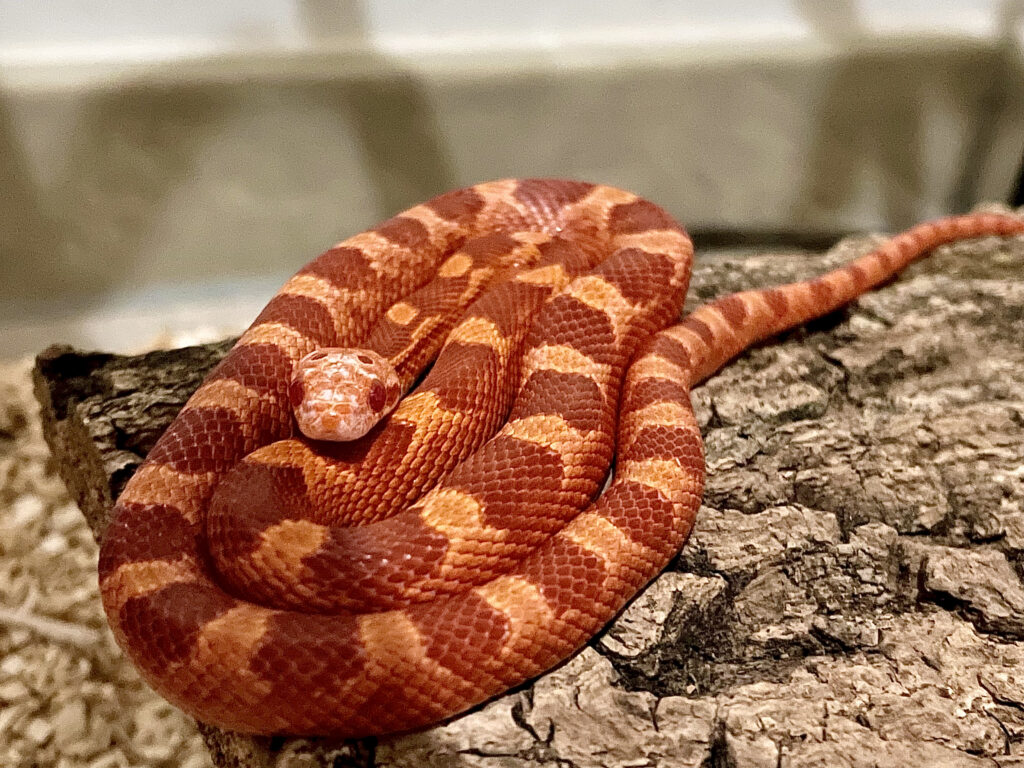
Breeders
| PROS | CONS |
|---|---|
| Specialty Morphs: Breeders often have a more extensive range of morphs. | Cost: Rare or specialty morphs might be pricier. |
| Detailed History: You can get insights about the snake’s lineage, age, and specific care details. | Accessibility: Depending on your location, connecting with a specialized breeder might be challenging. |
| Expertise: A reputable breeder will provide care guidance and post-purchase support. |
Pet Stores
| PROS | CONS |
|---|---|
| Convenience: If you’re looking for a standard morph and immediate purchase, pet stores can be accessible. | Generic Information: Not all pet store employees will have specialized knowledge about Corn Snakes. |
| Return Policy: Some stores may offer health guarantees or return options. | Variable Care Standards: The snake’s prior care might not always be up to par. |
To round off 🐍
Acquiring a Corn Snake is not just a purchase—it’s a commitment. Whether from a breeder or a store, always prioritize the snake’s health, ask plenty of questions, and ensure you’re prepared for the responsibility. The joy of sharing your life with a healthy, contented Corn Snake is well worth the effort.
Housing & Environment
Setting up the perfect home for your Corn Snake is crucial. The environment you create will play a significant role in the health, happiness, and longevity of your slithery companion. Let’s delve into how to curate an optimal habitat for them.
Appropriate Tank Size and the Importance of Security
Size
For a juvenile Corn Snake, a 10-gallon tank is often adequate. However, as they grow, they’ll need more space. An adult Corn Snake typically requires a 20 to 40-gallon tank, with dimensions around 36 inches long, 12 inches wide, and 12-16 inches tall.
Security
Corn Snakes are known to escape artists! Ensure the enclosure has a secure lid. Also, a lock or weighted top might be a smart addition. Providing security not only prevents escapes but also gives your snake a sense of safety.
Substrate Recommendations and Those to Avoid
Recommended
- Aspen Shavings: These are absorbent and allow the snake to burrow.
- Newspaper or Paper Towel: Not the most aesthetic, but easy to clean and change.
- Cypress Mulch: Retains moisture well, making it good for maintaining humidity.
Avoid
Cedar and Pine Shavings: These can release oils that are toxic to snakes.
Sand: Not suitable for Corn Snakes as it can cause impaction if ingested.
Temperature Gradients: Creating a Warm and Cool Side
Corn Snakes are ectothermic, meaning they regulate their body temperature using their environment.
- Warm Side: Use an under-tank heater to maintain a temperature between 82°F to 85°F. A basking spot can be slightly warmer, around 87°F.
- Cool Side: This side should stay between 70°F to 75°F. It offers the snake a place to retreat if they’re feeling too warm.
Always use a thermostat with heating elements to prevent overheating. Placing thermometers on both sides of the tank will help you monitor temperatures.
Humidity Levels: Maintaining the Right Balance
- General Humidity: Aim for a humidity level of around 50%.
- Shedding: During shedding periods, increase the humidity slightly, aiming for 60-70%. A humid hide or occasional misting can help achieve this.
Use a hygrometer to monitor enclosure humidity.
Enrichment: Climbing Branches, Hides, and Decor
- Hides: At least two hides (one on the warm side and one on the cool) should be provided. These give your snake places to retreat and feel secure.
- Climbing Branches: While Corn Snakes are not arboreal like some other snake species, they do enjoy climbing occasionally. Sturdy branches or elevated platforms can be a great addition.
- Decor: Plants (real or fake), logs, and other decor not only enhance the tank’s aesthetics but also offer additional hiding and enrichment opportunities.
In summary, creating an environment that mimics the Corn Snake’s natural habitat as closely as possible is essential. This means catering not just to their physical needs, but also their behavioral and psychological ones. It’s about crafting a space where they can thrive, not just survive.
Diet & Nutrition
A Corn Snake’s diet plays a pivotal role in its overall health and vitality. Being carnivorous, their dietary requirements might differ from other pets you may be familiar with. Let’s dive into the intricacies of feeding these elegant reptiles.
Understanding the Carnivorous Diet: What They Eat
Corn Snakes, in their natural habitat, are opportunistic hunters, preying mainly on small rodents.
- Rodents: The staple of their diet, typically, consists of mice. As they grow, they can progress from pinky mice to fuzzies, hoppers, and eventually, adult mice.
- Other Prey: In the wild, they might occasionally consume birds, bird eggs, or small amphibians. However, in captivity, sticking to a rodent diet is best for their health and nutrition.
Safe Handling and Feeding of Prey Items
Frozen vs. Live
It’s generally recommended to feed captive Corn Snakes frozen-thawed prey. This method is safer as live rodents can potentially injure the snake. Plus, frozen rodents are often more convenient and can be stored for extended periods.
Thawing
Always thaw frozen rodents at room temperature or in warm water. Never use a microwave for this purpose.
Feeding Tools
Using tongs or forceps, you can present the thawed rodent to the snake, mimicking movement to stimulate the snake’s predatory instincts.
Post-feeding
Always allow your Corn Snake some undisturbed time post-feeding. Handling or other stressors immediately after a meal can cause regurgitation.
Frequency and Size of Feedings Based on Age
- Hatchlings & Juveniles (up to 1 year): Feed every 5-7 days. Start with pinky mice.
- Sub-adults (1-2 years): Feed every 7-10 days. They can progress to larger mice sizes during this stage.
- Adults (2 years and older): Feed every 10-14 days. Adults typically eat adult mice, but larger Corn Snakes might occasionally eat small rats.
Tip: The prey size should be about the same width as the snake’s mid-body. Overfeeding or offering prey too large can be detrimental.
Importance of Fresh Water
- Water Dish: Always provide a dish of fresh water in the enclosure. This serves as a drinking source and also aids in maintaining the enclosure’s humidity.
- Hygiene: Ensure the water dish is cleaned and refilled regularly. Stagnant or dirty water can harbor bacteria.
- Shedding Aid: Corn Snakes might also soak in their water dish, especially during shedding, to help loosen their skin.
To round off 🐍
Feeding a Corn Snake might seem intricate initially, but with understanding and routine, it becomes straightforward. Prioritize their dietary needs, and you’ll have a thriving, healthy snake winding its way through your heart and its enclosure.
Handling & Socialization
Corn Snakes are known for their docile nature, making them one of the most handleable snakes in the reptile world. However, even with such a gentle disposition, understanding the right approach to handling and socialization is essential for a positive experience for both the snake and the handler.
The Do’s and Don’ts of Handling Corn Snakes
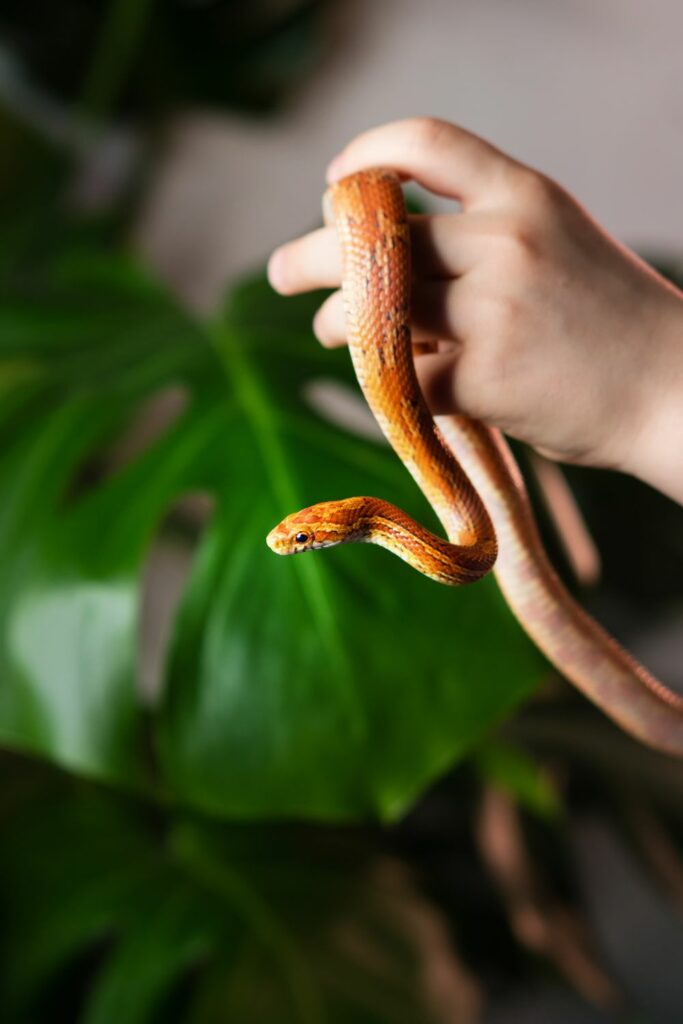
Do Start Slow
If you’ve just brought your Corn Snake home, give it a week or so to adjust to its new environment before initiating handling.
Don’t Handle During Shedding
Their vision is impaired, and they can be more sensitive during this time. Wait until the shedding process is complete.
Do Use Gentle Confidence
When you’re ready to handle your snake, move with deliberate calmness. Quick or jerky movements can be startling.
Don’t Grab the Middle
Instead of grabbing the middle of the snake’s body, gently lift from underneath, supporting as much of its body as possible.
Do Keep Sessions Short at First
Begin with short handling sessions of a few minutes, gradually increasing the time as the snake becomes more accustomed.
Don’t Handle After Feeding
Give your snake a day or two after eating before handling it to avoid the risk of regurgitation.
Building Trust: Acclimating Your Snake to Regular Interactions
Consistency is Key
Regular, short, and positive handling sessions can help your snake become more accustomed to you. Consistency helps reinforce that handling is a non-threatening experience.
Recognize and Respect Their Signals
If your snake is repeatedly trying to retreat or showing signs of stress (like hissing), it might be best to give it some space and try again later.
Positive Association
Some keepers use techniques like placing an old t-shirt in the enclosure to get the snake used to their scent.
Safety for Both the Snake and the Handler
Hand Washing
Always wash your hands both before and after handling to prevent the spread of germs.
Avoid Face and Eyes
While Corn Snakes are generally non-aggressive, it’s still a good practice to keep them away from your face.
Supervise with Kids
Children can be overly enthusiastic or unintentionally rough. Always supervise when they’re interacting with the snake, teaching them the proper way to handle it.
Be Aware of Surroundings
When handling, be aware of potential hazards in the environment, such as other pets, sharp objects, or open windows.
To round off 🐍
Handling and socialization with Corn Snakes, when done with patience and understanding, can lead to a trust-filled, enjoyable experience for years to come. It’s about mutual respect, ensuring the well-being of the snake while also providing a meaningful bond for the handler.
Health & Wellness
The allure of Corn Snakes extends beyond their captivating appearance. These creatures, with proper care, can lead long, healthy lives. However, as with any pet, they can face health challenges. Recognizing signs and acting proactively can ensure their well-being remains optimal.
Recognizing Signs of Illness or Distress
Appetite Changes
While it’s common for snakes to occasionally skip a meal, prolonged refusal to eat might indicate an issue.
Labored Breathing or Wheezing
This can be a sign of a respiratory infection or other health concern.
Lethargy
While snakes are not hyperactive creatures, noticeable and prolonged inactivity might be a concern.
Discharge
Any discharge from the mouth, nose, or eyes can indicate potential infections or health issues.
Irregular Shedding
Incomplete sheds or difficulty shedding can be signs of low humidity or underlying health issues.
Abnormal Feces
Watch out for diarrhea, unusual colors, or prolonged absence of defecation.
Shedding: Understanding and Aiding the Process
- Pre-shed Signs: Your snake’s eyes may turn a milky blue color, and their skin may appear duller.
- Increase Humidity: A boost in humidity can assist in the shedding process. Consider misting the enclosure lightly or providing a moist hide.
- Post-shed Inspection: After shedding, check to ensure the snake has shed completely, including eye caps. Incomplete sheds might require a lukewarm soak or consultation with a vet.
Common Health Concerns: Prevention and Treatment
Respiratory Infections
Caused by improper humidity or temperatures. Symptoms include wheezing and mouth breathing. Adjust habitat conditions and consult a vet if needed.
Mites and Ticks
Small external parasites that can latch onto your snake. Regularly inspect your snake and its habitat. If an infestation is found, consult with a reptile vet for treatment recommendations.
Digestive Issues
Impaction or constipation can result from ingesting substrate or due to low temperatures. Ensure correct substrate and tank temperatures and consider vet consultation for severe cases.
Mouth Rot
A bacterial infection in the snake’s mouth. Symptoms include redness or pus in the mouth. Requires veterinary treatment.
Scale Rot
Often caused by overly wet conditions, it manifests as discolored and blistered scales. Adjust humidity and consider using paper substrate until healed. Severe cases may require a vet.
When and Why to Consult a Reptile Veterinarian
- Regular Check-ups: As with all pets, periodic visits to a vet can help identify potential issues before they become severe.
- Uncertain Symptoms: If you notice any unusual behavior or physical changes that can’t be easily addressed, it’s best to consult a vet.
- Post-purchase Examination: It’s a good practice to have a new snake checked to ensure it’s healthy and parasite-free.
- Breeding Guidance: If you plan on breeding, a vet can provide valuable insights and health checks.
To round off 🐍
A Corn Snake’s health is an interplay of proper habitat conditions, a balanced diet, and attentive observation. Being proactive, recognizing signs early, and consulting professionals when in doubt are key pillars to ensuring your snake leads a long, healthy life.
Breeding & Reproduction
Breeding Corn Snakes can be a deeply rewarding venture, allowing enthusiasts to witness and partake in the cycle of life of these fascinating creatures. However, to ensure a successful breeding process and the health of both the parents and the offspring, it’s vital to be equipped with the right knowledge.
The Basics of Corn Snake Reproduction
Maturity
Corn Snakes generally reach sexual maturity around 18 to 24 months of age. It’s advisable to wait until they are fully grown, ensuring they’re in good health and condition before breeding.
Brumation
In the wild, Corn Snakes go through a cooler dormant period during winter, known as brumation. Mimicking this in captivity, by reducing temperatures and light hours for a couple of months, can stimulate reproductive behaviors.
Introducing the Pair
After brumation, reintroduce regular temperatures and light cycles for a few weeks before introducing the snakes. The male may pursue the female and eventually copulate by aligning their cloacal openings. Multiple introductions might be necessary.
Preparing for and Incubating Eggs
Laying Box
A few weeks post-copulation, prepare a laying box filled with damp sphagnum moss or vermiculite. The female will look for a suitable place to deposit her eggs.
Egg Collection
Once eggs are laid, they can be carefully transferred to an incubation container. This is typically a box with moistened vermiculite or perlite to retain humidity without being overly wet.
Incubation Conditions
Maintain a steady temperature of around 78°F to 82°F. The gender of Corn Snakes isn’t temperature-determined as with some reptiles, so this range is ideal for healthy development. Eggs typically take 60-65 days to hatch.
Avoid Disturbance
It’s essential to minimize disturbances to the incubation container. Check moisture levels occasionally, but otherwise, let nature run its course.
Care for Neonate Snakes: The Early Days
Separate Housing
Baby Corn Snakes can be cannibalistic. It’s advisable to house them separately in small containers with adequate ventilation.
First Meal
After their first shed, which usually occurs a week or so after hatching, you can offer them their first meal—typically a pinky mouse.
Regular Monitoring
Keep an eye on their growth, ensuring they’re shedding and eating regularly. If a neonate refuses food repeatedly, it might require scenting (making the pinky mouse smell like a preferred prey) or other feeding techniques.
Handling
Limit handling in the early stages to reduce stress. As they grow and become more accustomed to their environment, you can gradually introduce them to short, gentle handling sessions.
In conclusion, breeding Corn Snakes is not just about producing offspring—it’s a testament to the careful and committed care provided to these reptiles. It demands patience, observation, and a willingness to adapt to their needs. And the reward? Witnessing the miracle of life and nurturing the next generation of these stunning serpents.
Tips for Longevity & Happiness
Ensuring that your Corn Snake lives a long, healthy, and fulfilling life is not just about their physical well-being, but also about understanding their behavior and psychological needs. Here’s how you can pave the way for your snake’s longevity and happiness:
Common Mistakes and Misconceptions to Sidestep
One-Size-Fits-All Care
Each snake is an individual. While there are general guidelines for care, it’s essential to observe and cater to each snake’s unique needs and preferences.
Overhandling
Especially with new snakes or during shedding, give them space. Consistent, but not excessive, handling is key.
Assuming All Morphs are Alike
Some morphs may have specific health issues or care requirements. It’s essential to research and understand the needs of your particular snake’s morph.
Inadequate Security
Underestimating the escape abilities of Corn Snakes is a frequent mistake. Ensure their enclosure is escape-proof.
Neglecting Regular Check-ups
Even if your snake appears healthy, periodic health check-ups are vital to detect and prevent potential issues.
Ideas for Enrichment and Stimulation
Varied Environment
Occasionally rearranging the enclosure or introducing new hides and climbing structures can offer a new world to explore.
Foraging Opportunities
Instead of always using tongs to feed, occasionally allow the snake to ‘hunt’ by placing the prey item in their enclosure, stimulating their natural hunting behavior.
Sensory Stimulation
Different textures, like smooth rocks, rough bark, or soft moss, can provide tactile enrichment.
Climbing Structures
While Corn Snakes aren’t strictly arboreal, they do enjoy climbing. Incorporate branches or platforms for vertical exploration.
Interactive Toys
Consider safe, reptile-appropriate toys that move or make noise to pique their curiosity.
Reading and Respecting Corn Snake Behaviors
- Body Language: Learn to recognize signs of stress or discomfort, such as rapid breathing, hissing, or tight coiling. Adapt your actions accordingly.
- Appetite Changes: If your snake refuses food, consider potential reasons— are they in a shed? Is their environment too cold or too hot? Have there been recent changes that might be causing stress?
- Shedding Behavior: Recognize the signs of an impending shed, like cloudy eyes or dull skin, and ensure they have the required humidity and peace.
- Exploratory Behavior: If your snake is frequently trying to escape or is particularly active, it might be a sign they’re bored or that their environment needs enrichment.
The path to your Corn Snake’s longevity and happiness is paved with understanding, observation, and proactive care. It’s about forging a bond built on mutual respect and a deep-seated commitment to their well-being. With the right approach, your Corn Snake can not only live a long life but thrive in your care.

